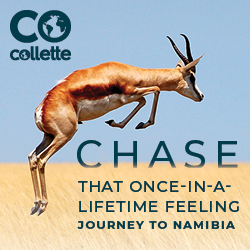Art Institute of Chicago
Aleksandra Matic has been doing her job — leading members of the Art Institute of Chicago on international and domestic trips — for 13 years, and “I’ve never had anyone travel with me in 13 years where you’re not quite sure why they’re there,” said the museum’s associate director of member travel.
That’s because it’s obvious.
“They’re all lifelong learners,” she said. “They all have that in common: a very, very strong interest in art and architecture and culture. That’s why they’re in it.”
Matic said, “They’re so engaged everywhere we go, whether I take them to Oklahoma or to India.”
The Art Institute of Chicago (AIC) has offered a members-only travel program since the early 1980s, and now runs eight to 10 international programs and another three or four domestic trips every year. Matic plans some of the domestic trips on her own, although for a select few she will work with a domestic tour operator such as New York City-based Art Horizons International. For international itineraries, she always works closely with a company to help with ground operations, for example, International Seminar Design Inc. for an upcoming trip to Rome, and Cox and Kings for the museum’s January trip to India.
For AIC trips, Matic always sends study leaders — people who are art and architecture experts, and sometimes current or former museum employees — to give formal slide-illustrated lectures and give the group a better understanding of what they will experience.
“Something I ask [the study leaders] to do is to take what we’re seeing wherever we’re going and tie it back to our collections,” Matic said. “It gets people’s wheels spinning. It gets them back to Chicago.”
AIC is a public museum and an encyclopedic museum, “and travel just fits into that so perfectly,” she said. “We have so many cultures and genres, and it’s truly an encyclopedic collection.”
In addition to study leaders, AIC member groups have expert local guides everywhere they go, get special access to private collections, or enjoy early-bird or after-hours access to sites and attractions. In Rome, for example, the group will get up early to get before-hours admittance to the Sistine Chapel.
“That will be something really special for them,” Matic said.
The India itinerary includes a day at the India Art Fair in New Delhi, where museum travelers will enjoy special access to VIP events, visits to private galleries and collections, and a focus on the bustling contemporary art scene in Mumbai.
Nearly all AIC travel programs focus on art and architecture, Matic said, “with some other disciplines thrown in,” like dance performances or concerts. During the museum’s Hudson River Valley itinerary, which is one of its most popular, travelers tour historic mansions, see a wide range of architecture, visit artist studios, stop at a foundry and view private collections of art and antiques.
www.artic.edu/join-and-give/travel-programs
Carnegie Museums of Pittsburgh
Anybody can get on a plane and fly to Paris. But not everybody can, for example, get into the Manufacture Nationale de Sèvres, first a royal, then an imperial porcelain factory that is now run by the Ministry of Culture, unless, of course, you’re with the Carnegie Museums of Pittsburgh’s members travel program.
“I try to understand what is it they can’t do if they make their own trip,” said Barbara MacQuown Tucker, director of individual giving for the Carnegie Museums of Pittsburgh. “Anybody can do their own trip, but people who travel with us are generally pretty high-level donors and are super sophisticated and want these accesses.”
The museum travel program is open to members on a sort of tiered system. Reservations first open to patrons, then to donors, and then, if space is still available, to members. Tucker said the museum program generally runs about five to eight itineraries each year, with six planned for 2016. Itineraries run the gamut from day trips to two-week tours of India. Group sizes generally range from eight to 18 people, although the November day trip to the Cleveland Museum of Art sold out with 35 people.
No matter how close to home or how far afield, Tucker aims to provide what guests cannot get on their own. Tucker said she’s unusual in the museum travel world because she plans nearly all of the itineraries on her own, including all the trips to Europe, and only uses tour operators and travel companies in international destinations such as India where she can’t operate a trip herself.
During a trip to England last year, Tucker took the group to Highclere Castle, also known as the fictional Crawley estate from the popular PBS show, “Downton Abbey.” In addition to a tour —tickets are tough to come by — Tucker arranged to have the Countess of Carnarvon, the real-life owner of Highclere Castle, speak to the group. She also arranged to have Sir Edward Dashwood take travelers through his house at West Wycombe Park.
“It’s a lot of painstaking work, but I somehow find a person who finds another person” who can provide such intimate access, Tucker said.
During a recent trip to Russia, the group took a behind-the-scenes tour at the Mariinsky Theatre, where travelers saw crews making sets and costumes, and visited the Hermitage Theatre storage facility where the group saw czars’ carriages.
When Tucker led a group to Paris a couple of years ago with the museum’s curator of decorative arts, they were able to arrange entree into private, historic homes that boasted collections of fine art or decorative arts, such as china, glass and silver. They were even able to visit the American ambassador’s house, which “was a really big deal,” Tucker said. Sometimes, if a house is open to the public, museum travelers go before hours when the owner receives them and personally shows them the collection.









